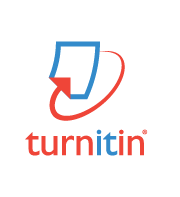Perancangan Konsep Lean dengan Metode 5S pada Publishing Company dan Bookstore
Abstract
5S method as lean concept foundation is an effective tool to achieve improvement effort in organizations. Organizations which do not have working area standard yet according to 5S method have the chance doing the improvement, as the design suggested to the publishing and bookstore chain company. The research was done in three working areas processing product ordering documents by consumers. Data collection was done by field observation and interviews to related staff. Data collected includes process flow in the three working areas, actual physical working area condition, and activity time as modeling base with ProModel 2001. Based on review related to methods, machines, environment, materials and man aspects, the three working areas need an improvement based on 5S method. The company does not have similar standards yet, so kinds of waste happen at times at the working areas. Gudang working area improvement was done based on waste identification, process flow, activity time, and current actual physical condition. At departemen administrasi, the improvement was done based on waste identification, actual physical condition, and the area necessity. At departemen keuangan, improvement was done based on waste identification, actual physical condition, and the area necessity. At the three working areas the 5S was designed from seiri (proper arrangement), seiton (orderliness), seiso (cleanliness), seiketsu (standardize), and shitsuke (discipline) activities each. Gudang working area modeling was done with the basis on activity time data to test improvement design effect according to 5S method. Modeling was based on actual condition and three alternatives.
Working area improvement design with 5S method was designed as suggestions at the three working areas in the company. Success factor in the implementation is viewed based on the whole staff’s commitment, with the consideration on any obstacles, such as workers’ resistance to the 5S method suggested. Therefore, in this research workers’ psychology aspects could be taken into consideration for further details. Modeling results indicated the alternative to eliminate a certain single activity without any staff added yielded the optimum result and could be taken into consideration for the company to implement.
Keywords: 5S, Lean, Waste
Full Text:
PDFReferences
Bozarth, Cecil C. dan Robert B. Handfield. 2008. Introduction to Operations and Supply Chain Management. Pearson-Prentice Hall, New Jersey.
Liker, Jeffrey K. 2006. The Toyota Way: 14 Prinsip Manajemen dari Perusahaan Manufaktur Terhebat di Dunia. Penerbit Erlangga, Jakarta.
Moleong, Lexy J. 2009. Metodologi Penelitian Kualitatif. Remaja Rosdakarya, Bandung.
Navidi, William. 2006. Statistics for Engineers and Scientists. McGraw-Hill, New York.
ProModel Corporation. 1995. ProModel version 3.0 Manufacturing Simulation Software User’s Guide. ProModel Corporation, Orem.
Santoso, Singgih. 2007. Menguasai Statistik di Era Informasi dengan SPSS 15. Elex Media Komputindo, Jakarta.
Sekaran, Uma. 1992. Research Methods for Business: A Skill Building Approach. John Wiley & Sons, New York.
Summers, Donna C.S. 2009. Quality Management: Creating and Sustaining Organizational Effectiveness. Pearson-Prentice Hall, New Jersey.
Turner, Wayne C. 1993. Introduction to Industrial and Systems Engineering. Prentice Hall, New Jersey.
Breen, Jim. 2010. Denshi Jisho [didownload 15 Maret 2010 dari http://jisho.org]
Gapp, Rod, Ron Fisher, Kaoru Kobayashi. 2008. Implementing 5S within a Japanese context: an integrated management system. Management Decision Vol. 46 No. 4, pp: 565-79 [serial online] [didownload 15 Maret 2010 dari http://proquest.umi.com/pqdweb?index=4&sid=5&srchmode=1&vinst=PROD&fmt=6&startpage=1&clientid=110992&vname=PQD&RQT=309&did=1472840641&scaling=FULL&ts=1270159261&vtype=PQD&rqt=309&TS=1270159386&clientId=110992]
Hirano, Hiroyuki. 2009. JIT Implementation Manual: The Complete Guide to Just-in-Time Manufacturing. Volume 2: Waste and the 5S’s [serial online] [didownload 15 Maret 2010 dari http://www.ebookee.net/JIT-Implementation-Manual-The-Complete-Guide-to-Just-In-Time-Manufacturing-Volume-2-Waste-and-the-5S-s_347467.html]
Liker, Jeffrey K. 2007. Advanced Praise for Kaizen and the Art of Creative Thinking [serial online] [didownload 15 Maret 2010 dari http://www.nwlean.net/Shingo%20exerpt.pdf]
DOI: http://dx.doi.org/10.30813/jiems.v3i2.75
Refbacks
- There are currently no refbacks.



